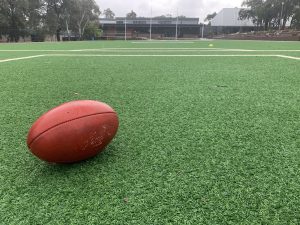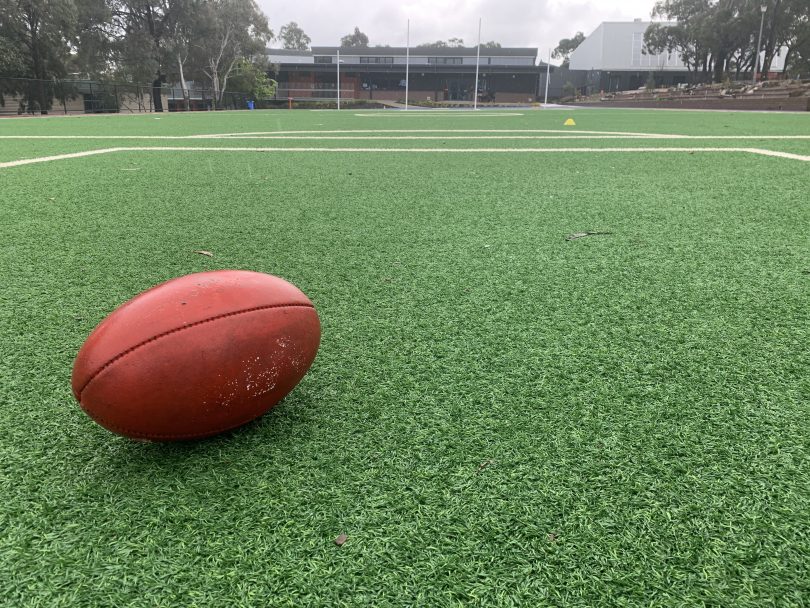
A football sits on a local oval on Sunday, Aug. 23, 2020. Australian team sports aren’t as popular as you’d think, and it could be impacting our mental health. (Sean Mortell)
From cricket and Australian football to basketball and netball, sport is a common pastime for many Australian citizens. But other activities have become more widespread, and it has unveiled a trend when it comes to our mental health.
Contrary to popular belief, organised sport is not the most popular physical activity enjoyed by Australians. In fact, Sport Australia’s 2019 version of their annual AusPlay survey found football/ soccer to be the highest organised sport in the nation in terms of participation numbers. On the overall list of most popular physical activities, it ranked number six.
Activities such as bushwalking, gym and running all outweighed football/ soccer. The majority of the top ten activities were individual exercises that can be completed individually, rather than organised sports and their team environments.
What might come as a surprise is how this relates to mental health. This sport and mental health paper by Dr Ralph Richards and Christine May refers to the resilience and social benefits that organised sport can have on players. At the biochemical level, consistent physical activity, especially in a social environment, can lead to greater mental wellbeing.
What we know about mental health problems is that they can impact anyone, regardless of age. When looking at which age range is recording more mental illnesses, it’s the young adults who are suffering the most.
Overnight admitted mental health separations by age group, 2006-07 to 2017-18
This Australian Institute of Health and Welfare (AIHW) data shows that mental health is a serious problem for our adult population, and one that creates an interesting pattern when you compare it to the amount of physical activity completed by each age range.
In these specific results from the 2019 AusPlay survey, the two highest age brackets in regards to mental health problems (25 to 34 and 35 to 44) are some of the lowest age ranges when it comes to the percentage of people exercising at least once a week. When it comes to completing physical activity at least three times per week, they have the lowest two percentages. There’s a direct correlation between the amount of physical activity completed and the prevalence of mental illnesses.
This AIHW study suggests the third biggest motivation for participating in sport is the social aspect. Without this support, Australian adults are suffering amidst a lack of physical activity. It may not be the primary solution, but getting involved in team sports could be a key way of stemming mental health problems in sports-mad Australia.







